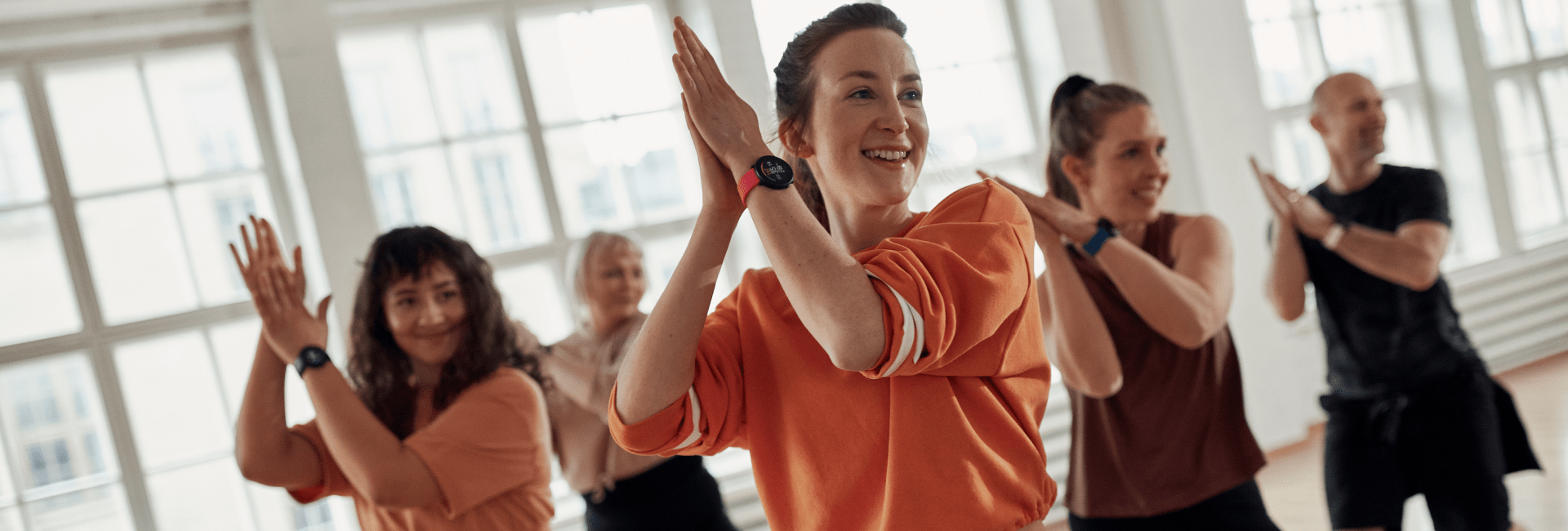After those many hours spent running, rowing, and stretching our bodies into yoga poses, wouldn’t it be nice to know that we were also exercising our minds at the same time? Turns out, that not only can exercise improve your mood but it can also help enhance your memory and concentration.
So, what exactly happens to our brains while we’re working out? We asked Sports & Exercise medicine professional and Brain Health entrepreneur Teemu Vornanen to give us the scientific low-down on how exercise affects the brain and what we can do to enhance our cognitive functions – both now and in the future.
What happens to the brain when we exercise?
Your brain is like plastic, in the sense that every stimulus/input can mold and reshape (i.e. rewire) your brain throughout your lifetime.
We all know that when we exercise, our blood flow increases and often we start to feel more positive. In addition to these bodily sensations, studies have shown, interestingly, that exercise subconsciously affects our brain much more than this.
Let’s start with a few of the key areas, to give you an idea of the bigger picture. Firstly, your brain is like plastic, in the sense that every stimulus/input can mold and reshape (i.e. rewire) your brain throughout your lifetime. At a neurobiological level, this rewiring comes from neurogenesis (the creation of new neurons/nerve cells) and neuroplasticity (the growth and improvements of neural networks).
So, how are these processes affected by exercise? Well, scientists are mainly interested in four different levels of change that place in the brain.
1) Molecular and cellular changes are the key mechanism that mediates a broad range of neurotrophic (growth) factors. These include:
- Brain-derived neurotrophic factor (BDNF): a protein that promotes the growth of neurons. This is the brain’s natural fertilizer, affecting your learning, memory, and mental health.
- Insulin-like growth factor (IGF-1): a protein that works together with BDNF in learning processes. It also works with insulin to bring glucose to the brain.
- Vascular endothelial growth factor (VEGF): a protein that stimulates the formation of blood vessels. This is a process called angiogenesis, which is important as new cells need new blood vessels.
2) Neurotransmitters are the body’s chemical messengers. Without these molecules, no messages would be carried from one cell to another. The primary ones are:
- Serotonin – this is the mood molecule, which also enhances your cognition, reward, learning, and memory.
- Dopamine – this is the motivation molecule, which encourages us to repeat nourishing experiences.
- Norepinephrine – this is the stress response molecule, which works with adrenaline to increase heart rate and keep blood pumping from the heart.
When we exercise, these are all released immediately, regulating our mood, fine-tuning our attention, and enhancing our learning.
3) Functional and structural brain changes occur when we exercise, affecting the morphology (form and structure) and connectivity of our brain. This primarily occurs in two key parts of the brain:
- Prefrontal cortex – located in the frontal lobe, this area of the brain is used to make decisions and complex plans as well as express our personality.
- Hippocampus – located in the temporal lobe, this area of the brain is where we store new memories.
Exercise increases the grey matter volume in both these areas of the brain – the size of them increases and their connection to other parts is strengthened. They each help us handle stress and our emotions, so the better they work then the more effectively we can handle such strong feelings. Exercise also helps delivers more oxygen and nutrients to these areas and improves waste removal.
4) Socio-emotional changes take place when we exercise, affecting our sleep stress and mood, etc. plus our cognitive functions, including memory, attention, and decision making.
Besides directly affecting the brain, exercise also reduces peripheral risk factors for cognitive decline, such as hypertension and insulin resistance – components of metabolic syndrome that converge to increase the risk for brain dysfunction and neurodegeneration.
So, from all these different processes you can how exercise affects the brain in a variety of ways.

Are there any types of exercise that specifically enhance brain functionality? Can we exercise our brains?
Freestyle forms of exercise, such as hip hop dancing or skateboarding, could be especially beneficial for the brain because of how engaged it needs to be and how it challenges your brain to be creative.
Definitely. Exercise is essentially medicine for the mind so working out your body will boost it as well.
The best type of exercise for your brain is the one that you like because enjoyment is the most important factor. Even a 30-minute walk every day is good for your brain.
Regular aerobic exercise (that raises your heart rate) is good for your brain because an increased intensity level causes more growth factors and neurochemicals to arise. This will have a positive impact on your stress levels, learning, and memory.
HIIT is a great option for exercising your brain because there is evidence that it causes different types of benefits compared to low-intensity aerobic exercise, such as increased endothelial function (Petrick et al. 2020).
Resistance training could also be very beneficial, if executed correctly, as studies (Herold et al. 2019) have shown that it leaves you with meaningful functional brain changes, especially in the frontal lobe, which are accompanied by improvements in executive functions.
Freestyle forms of exercise, such as hip hop dancing or skateboarding, could be especially beneficial for the brain because of how engaged it needs to be and how it challenges your brain to be creative.
Any form of movement is good. Movement with high-intensity is better – be it cycling, boxing, or even salsa dancing. A combination of exercises, which includes some form of high-intensity movement two or three times a week, will give you the best overall result. Variety is key – exercise that makes you break a sweat is best but it doesn’t have to be every day.
Are there any differences between short-term effects and long-term effects of exercise on the brain?
Even two minutes of exercise can immediately improve your attention and learning results.
Most of the benefits detailed above are the result of long-term, regular exercise – requiring weeks or months of practice.
However, a short bout of exercise will have its effects as well. Information processes, attention, working memory, problem-solving, decision making – these all improve for a period of up to two hours post-exercise.
Creativity also might increase immediately after exercise (Frith et al. 2019), which anecdotal evidence (from great minds such as Nietzsche and Einstein) also supports. Going for a walk is a great way to think. Even two minutes of exercise can immediately improve your attention and learning results (Blomstrand & Engvall 2020).

Does exercise make you smarter? Enhance your memory or concentration?
Exercise probably doesn’t make you more intelligent as this is genetic but it does help you preserve cognitive function over time.
Exercise probably doesn’t make you more intelligent as this is genetic but it does help you preserve cognitive function over time. Cognitive decline accelerates rapidly as we age and the best way to protect our brain health is to be physically active. As mentioned above, our brain is plastic throughout our lifetime, therefore exercise does good for the brain, no matter how old you are.
Exercising just before a learning task has been shown to help you recall this information later. So how about utilizing an exercise break just before learning something new and difficult? Exercise is like a ‘concentration injection’. Imagine if you could get the same benefits from a can of soda? This is something that we can all utilize in our lives.
Are there any ‘negative’ effects of exercise on the brain and its chemistry?
Best to do some low-intensity training just before, as well right after, a learning task.
Too much is too much. You don’t want to put your body under chronic stress by overdoing it. There is an upper limit where too much exercise stops being helpful.
For example, if you were to do an ultramarathon, your cortisol levels might stay elevated, which may in turn temporarily freeze your memory functions.
For some strenuous exercises, there will be different effects on the brain at different times following your workout. For example, immediately after doing HIIT, you will probably feel quite exhausted, which means it might not be so good for thinking. Best to do some low-intensity training just before, as well right after, a learning task. However, one study (van Dongen et al. 2016) demonstrated that if you exercise intensely, not right after, but four hours after a learning session your learning results are actually enhanced, However, more studies need to be done for these time buffers with exercise and the brain.
References
Petrick, H. L., King, T. J., Pignanelli, C., Vanderlinde, T. E., Cohen, J. N., Holloway, G. P., & Burr, J. F. (2020). Endurance and Sprint Training Improve Glycemia and VO2peak, but only Frequent Endurance Benefits Blood Pressure and Lipidemia. Medicine and Science in Sports and Exercise
Herold, F., Törpel, A., Schega, L., & Müller, N. G. (2019). Functional and/or structural brain changes in response to resistance exercises and resistance training lead to cognitive improvements–a systematic review. European Review of Aging and Physical Activity, 16(1), 1-33.
Frith, E., Ryu, S., Kang, M., & Loprinzi, P. D. (2019). Systematic review of the proposed associations between physical exercise and creative thinking. Europe’s Journal of Psychology, 15(4), 858-877.
Blomstrand, P., & Engvall, J. (2021). Effects of a single exercise workout on memory and learning functions in young adults—A systematic review. Translational Sports Medicine, 4(1), 115-127.
van Dongen, E. V., Kersten, I. H., Wagner, I. C., Morris, R. G., & Fernández, G. (2016). Physical exercise performed four hours after learning improves memory retention and increases hippocampal pattern similarity during retrieval. Current Biology, 26(13), 1722-1727.
If you liked this post, don’t forget to share so that others can find it, too.
Or give it a thumbs up!
I like this article
Please note that the information provided in the Polar Blog articles cannot replace individual advice from health professionals. Please consult your physician before starting a new fitness program.





